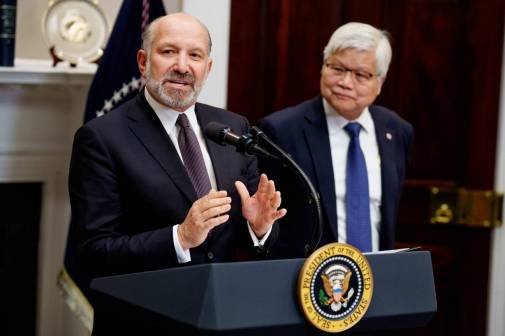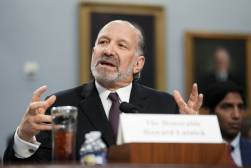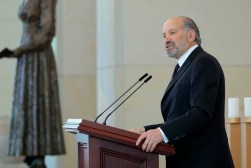Texas voters approve new broadband expansion fund

Voters in Texas handily approved a new state constitutional amendment that will create a Broadband Infrastructure Fund to support its ongoing expansion plans and future projects through the $42.5 billion Broadband Equity, Access and Deployment program.
The new $1.5 billion broadband fund will go toward matching grants for BEAD projects, allowing Texas to leverage funds through the American Rescue Plan Act and other federal programs, according to Greg Conte, the director of the Texas Broadband Development Office. Texas was allotted $3.3 billion through the BEAD program — the most of any state.
“It’s clear in the way the legislation was written and the way the proposition was worded that we have a lot of flexibility on how we want to utilize the broadband infrastructure fund, which is great,” Conte said in an interview with StateScoop. “We, as the BDO, will put our heads together and start brainstorming, strategizing, on how we want to most effectively use that funding.”
One of the required uses for the new fund in Texas is for a broadband pole replacement program, which will reimburse up to the lesser of $5,000 or 50% of the costs incurred or paid by a broadband provider or pole owner to replace a pole used to deploy eligible broadband service.
Conte said he also sees the fund as a potential opportunity to support the state’s Digital Opportunity Program, which helps develop technology literacy programs, improve digital access and overcome residents’ affordability challenges.
“One of the sections that we’re building capacity in is a digital opportunity wing to address the needs of Texans, not just from the infrastructure piece, but also ensuring that Texans do have the devices, the literacy and the ability to utilize internet.”
According to the American Community Survey from the 2020 census, 2.8 million Texas households — an estimated 7 million residents, or roughly a quarter of the state’s population — do not have access to broadband internet. Based on the National Telecommunications and Information Administration’s broadband definition — a minimum download speed of 25 megabits per second and 3 Mbps upload — there are about 1.1 million eligible locations in Texas that are unserved or underserved, Conte said.
Despite recent investment, Conte said he’s unsure if the new fund will provide enough financial support to completely close the state’s digital divide. The bill that created the constitutional amendment originally proposed a fund of $5 billion, but it was reduced to $1.5 billion by the time Gov. Greg Abbott approved the ballot item on June 9.
Texas Comptroller Glenn Hegar had previously testified before the state legislature that a sum closer to $10 billion was needed to connect all of Texas to reliable broadband.
“I don’t know if I can speak to how much it’ll shrink the gap,” Conte said. “But what I can say is this will certainly be a driving force as we continue to invest in broadband expansion. We can look at this as a driving force, but we can’t say the public funds are going to be the hear-all, say-all of closing the digital divide because we’re going to need to see private investment.”
Conte said he also anticipates that inflation, supply chain issues and workforce constraints could stand in the way of stretching funds as far as possible. But he predicted the broadband expansion plans will jumpstart a monumental change in Texas. When he first started his role with the Broadband Development Office when it was established in 2021, Conte said, he frequently joked that his goal was to work himself out of a job.
“Obviously we haven’t accomplished the mission of this office,” Conte said. “Will [these investments] fully close it? I don’t know. But it’ll certainly light the fuse to move us in the right direction of closing the digital divide.”






